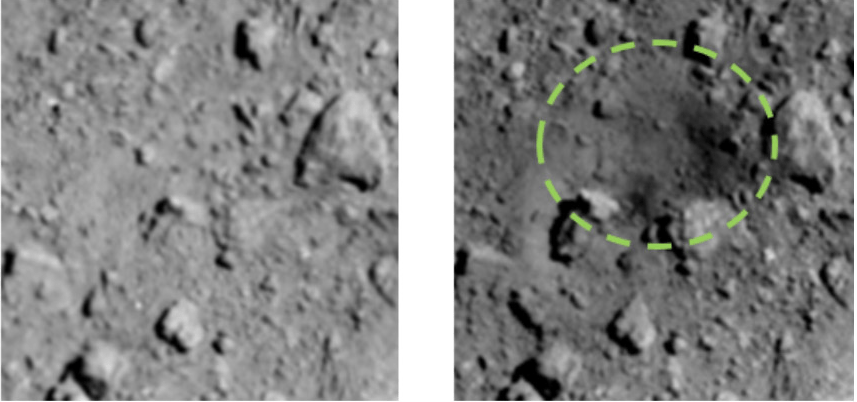
- Japanese Hayabusa-2 probe have succeeded in creating the first-ever artificial crater on an asteroid.
- According to the Japanese scientists, it is a step towards shedding light on how the solar system evolved. The images showed a crater 10 metres in diameter.
- The announcement comes after the Hayabusa2 probe fired an explosive device at the Ryugu asteroid early this month to blast a crater in the surface and scoop up material, aiming to reveal more about the origins of life on Earth.
- Yuichi Tsuda, Hayabusa2 project manager at the Japanese space agency (JAXA), told reporters they confirmed the crater from images captured by the probe located 1,700 metres (5,500 feet) from the asteroid’s surface.
- Creating an artificial crater with an impactor and observing it in detail afterwards is a world-first attempt,’ Tsuda said.
- NASA’s Deep Impact probe succeeded in creating an artificial crater on a comet in 2005, but only for observation purposes.
- The aim of blasting the crater on Ryugu is to throw up “fresh” material from under the asteroid’s surface that could shed light on the early stages of the solar system.
- The asteroid is thought to contain relatively large amounts of organic matter and water from some 4.6 billion years ago when the solar system was born.
- In February, Hayabusa2 touched down briefly on Ryugu and fired a bullet into the surface to puff up dust for collection, before blasting back to its holding position.
- The mission, with a price tag of around 30 billion yen ($270 million), was launched in December 2014 and is scheduled to return to Earth with its samples in 2020.


